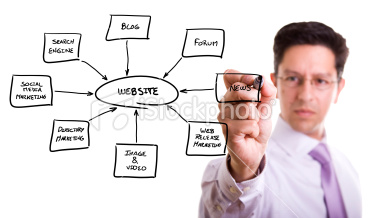I’m a bit of a history buff. I particularly enjoy stories about people who took chances and accepted new ideas, approaches, or technologies despite social pressure to stick with the status quo. Why? Because progress depends on groups of this type or person–risk-takers and visionaries—to propel the rest of us into the future. But just as there must be early adopters to champion new ideas, there always seem to be people who avoid mastering the new ideas for as long as possible.
Don’t Be Left Behind
The internet as a sales and marketing medium has reached critical mass. Consumers across all age groups look to the internet for brand, quality, customer satisfaction, and product information, using every type of device from desktop computers to phones to tablets. Yet I am still frequently asked, “Is it really important for me to have a website?”
And then there’s the question of social media. Only last month I had dinner with a group of jewelry industry leaders where I heard one executive rather forcefully express his opinion that he did not see the value of social media to business, nor did he believe that computers had a significant role to play beyond increasing efficiency and data management.
If you want to increase the value of your business, you must embrace and master internet technology as an important part of your marketing, selling, customer communications, customer service, and brand management strategy.
The Next Wave of Cottage Industry
The publishing and video industries have much to teach small business. Both industries were transformed by big-box retailers—small retailers simply could not compete on inventory or on price. And now, as the behemoths of books and video crumble under their own scale, high-service, high-quality bookstores and video stores are returning to serve discriminating consumers.
But they are not returning in the same configuration as before. New stores offer more knowledgeable customer service, special order services, engaging social media experiences, rich websites to offer a breadth of inventory they cannot afford to carry in the stores, mobile apps to engage with consumers wherever they are, and in-store online technology to supplement the store experience. The stores are staffed with collectors and impassioned readers and film viewers who bring true expertise to their customers.
These changes have created opportunity for independent producers and publishers, who both sell to these more creative independent retailers and sell directly to consumers. Using the same tools, independent producers can now service more dealers and reach more consumers than ever before and sustain those relationships without creating expensive corporate infrastructure to do so.
You Can Must Do This
It’s no longer enough to just have a website. You must have a website that looks and feels current, and offers more than just a few pretty pictures.
About 10 years ago during the first big go-round of website building, many companies got stung by creating websites that were expensive to build—and even more expensive to maintain. Today you have better options. Both technology and the people providing and servicing it have evolved. Here are some tips to help you fully embrace internet marketing technology and all its benefits:
- Unless you can program using HTML, HTML5, CSS or PHP yourself, do not let someone create a static website for you that requires programming language to add content, images, or pages. Today you have an abundance of options for building a CMS (content management system) site, from richly designed Wordpress environments to Joomla, Drupal, Radiant, Silver Stripe, and CMS Made Simple.
- Have a professional website designer design and produce your website using a mainstream CMS tool. Then have her train you how to use the back-end for your day-to-day operations. After that, you need to use your website professional only for more complicated tasks, such as adding new functionality or changing your design on an as-needed basis.
- Yes, you need a Facebook page. If you’re not sure how to set it up yourself, this is a great task for a social-media-savvy college intern. Just getting a page up and running, adding pictures regularly, and beginning to have conversations with your customers is an excellent start.
- If you want to add more exciting options to your Facebook presence, such as integration with your website, catalog pages you can sell from, newsletter signups, promotions, forms, surveys, and campaigns, you may need to hire a professional. But you can add these features to your Facebook page as your customer list builds, so you can be sure to reap the benefits—and have the development pay for itself—as quickly as possible.
- Using a tablet computer, such as an iPad2 or a Droid device, is a fantastic way to show your work without carrying your entire line. But…you need a full catalog of quality images for this to work. You can download images directly to your device or create an online image catalog to which you can easily connect.
- Unless you are a retail store—or are doing a high volume of online sales—you probably don’t need a mobile app right now. But custom mobile apps will be considered as commonly required as websites in a few short years. Right now, spend your time using other companies’ mobile apps and getting comfortable with how the world of mobile marketing works. When the time comes to do it yourself, you’ll know what to expect.
The internet has moved off the dirt roads of its infancy and is now offering a smooth interstate experience at high speeds. If you’re still driving a horse-drawn hay cart and trying to keep up, you’ll not only be left far behind, but also be engulfed in your own dust.











